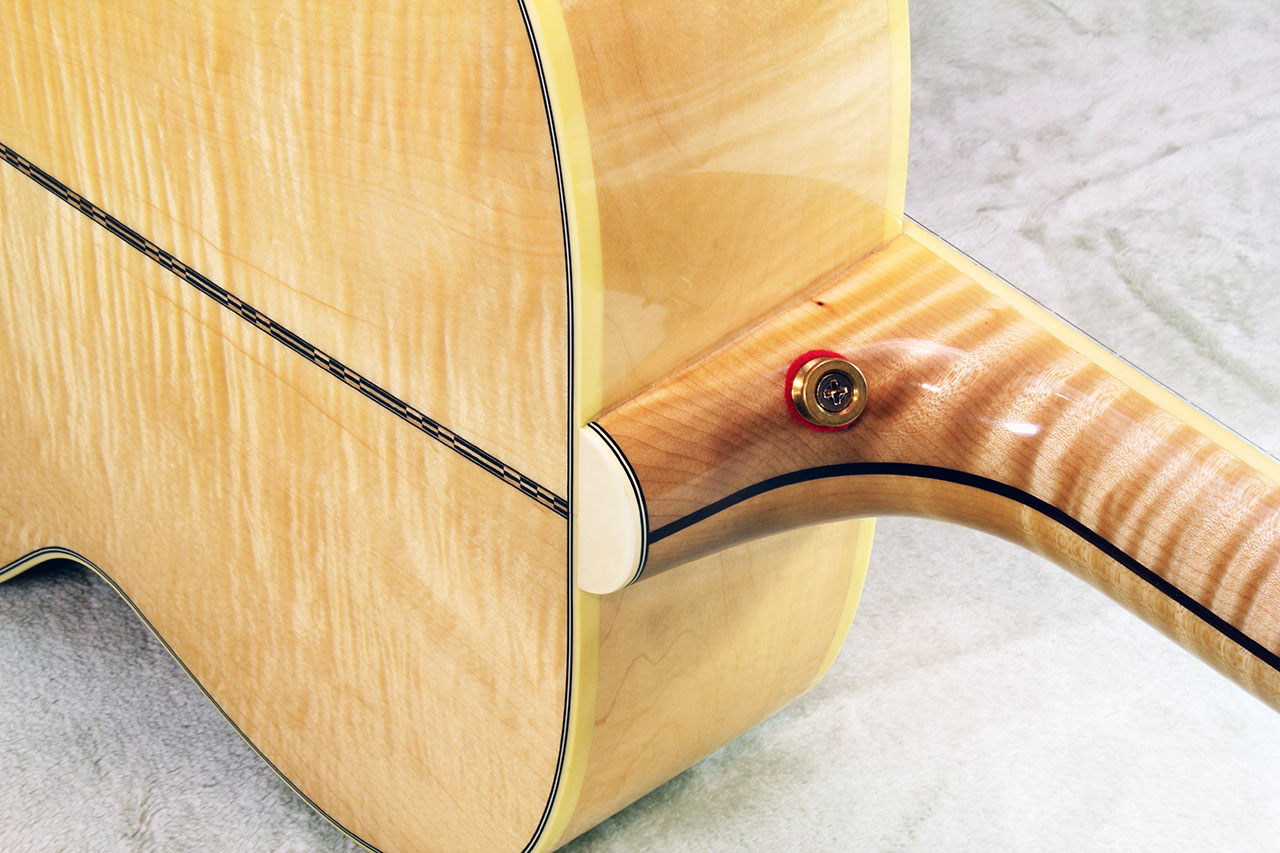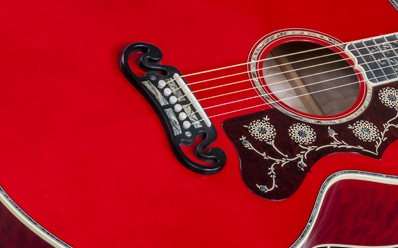


Older J-200s are in high demand, especially ones from the days when the guitar was typically called the Super Jumbo, and ones made before the Norlin years when many Gibson products went south. The controls are pretty convenient, just inside the top of the soundhole, but working the several switches can take some practice unless you find just one tone combination you like and stick with it, adjusting your tone with the controls on the PA or amp as needed. The J-200 comes with built-in Fishman Ellipse Aura electronics, with a switch for selecting four tonal images.

The tortoise pickguard is Gibson’s standard Super Jumbo shape with the traditional floral and vine design, and the guitar has the love-it-or-hate-it moustache bridge. This is just my personal preference and experience though, so I hope that nobody takes it as me just ragging on Epiphone in general because they do make some nice guitars but their acoustic range is not something that I would shell out money for.The guitar is gorgeous both sonically and aesthetically, featuring the old Gibson crown peghead logo (sometimes called the “thistle” logo), which has since been used on the pegheads of many Gibson models. If you want an acoustic-electric, I would recommend looking around more in something other than Epiphone. They start to crackle after what seems like too short of a time, the tuner is not that great, and there isn't much of a change in sound or tone when you start to fiddle with the knobs.

The real downfall of all Epiphones though is their electronics. It really isn't too much of an issue but it does make the guitar play nicer. They are kind of sharp and you might want to look into getting them touched up. The Epiphone plays quickly because of the neck profile and the finish on the back of the neck but the frets are not very nicely dressed. The Epiphone is an alright guitar for the money but you really can do better for $400.


 0 kommentar(er)
0 kommentar(er)
